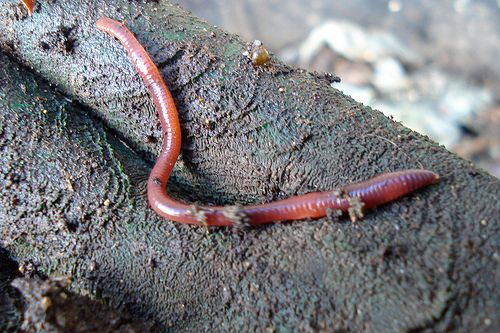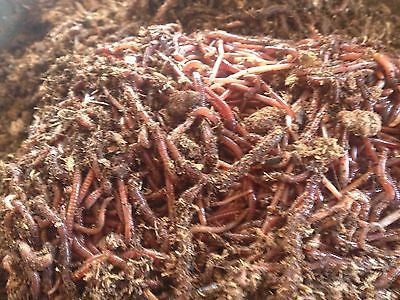Red Wiggler Worms Demystified: Unlocking the Keys of Vermiculture for Greener Living and Nutrient-Rich Dirt
In the realm of sustainable techniques for enhancing soil quality and advertising eco-conscious living, red wiggler worms play a crucial yet typically overlooked function. Red Wiggler Worms. Understanding the ins and outs of caring for these worms, optimizing their setting, and harnessing their spreadings can lead to a greener lifestyle and healthier dirt for plants to thrive.
The Role of Red Wiggler Worms
Red Wiggler worms play an essential role in composting systems by effectively damaging down raw material right into nutrient-rich spreadings. These starved eaters eat a variety of organic products, such as cooking area scraps, lawn waste, and paper products. As they feed, the worms' digestion procedures damage down the organic matter right into a penalty, dark, and nutrient-dense material called worm spreadings or vermicompost.
The spreadings produced by Red Wiggler worms are highly useful for dirt health and wellness and plant development. They are abundant in essential nutrients like potassium, nitrogen, and phosphorus, which are vital for sustaining healthy and balanced plant development. Additionally, worm spreadings contain helpful microbes and enzymes that assist enhance soil structure, boost water retention, and improve nutrient uptake by plants.
Benefits of Vermicomposting

Moreover, vermicompost, the nutrient-rich output of vermicomposting, acts as an excellent organic fertilizer and dirt conditioner. It enhances soil framework, boosts soil oygenation, and enhances dirt moisture retention. These homes add to healthier plants with more powerful root systems and far better resistance to insects and illness. Vermicompost also enhances the dirt with important nutrients like nitrogen, potassium, and phosphorus, promoting plant development and overall soil fertility.
Furthermore, vermicomposting assistances lasting gardening practices by offering a chemical-free and all-natural alternative to synthetic fertilizers. Red Wiggler Worms. This eco-friendly strategy not only enriches the soil but additionally helps in reducing dependence on unsafe chemicals, advertising a greener and more sustainable way of horticulture
Establishing a Worm Container
When developing a worm container for vermicomposting, correct arrangement is vital to ensure the success of the composting process. The very first step in setting up a worm container is picking an appropriate container. This can be a plastic container Check This Out or wood box that supplies sufficient area for the worms to move around and has correct drainage openings to protect against waterlogging. Next off, a bed linens product such as shredded newspaper, cardboard, or coconut coir need to be included to the container. This bed linen supplies a comfortable environment for the worms and aids preserve dampness degrees.
After adding the bed linen, present the red wiggler worms to the bin. It is advised to begin with a small number of worms and gradually boost as they multiply. The worms ought to after that be offered with food scraps such as vegetables and fruit peels, coffee grounds, and eggshells. It is important to stay clear of adding meat, milk, oily, or salted foods to avoid drawing in pests and producing unpleasant smells.
Frequently keep track of the wetness levels and temperature level in the worm bin to make certain ideal problems for the worms. With proper setup and maintenance, the worm bin will effectively convert natural waste into nutrient-rich garden compost for your plants and garden.
Collecting Worm Spreadings
To successfully gather nutrient-rich worm click resources castings from your vermicomposting system, an organized harvesting technique is essential. When it comes time to collect the worm spreadings, there are a few key actions to comply with to make sure a successful procedure.

Troubleshooting Common Issues
Identifying and attending to common obstacles that may arise during the important link vermicomposting process is vital for preserving a productive and healthy and balanced worm bin. Including excess food scraps can lead to a build-up of wetness and acidity in the worm bin, possibly hurting the worms. Another problem is unpleasant odors rising from the worm bin.
In addition, if the worm population is decreasing or the worms show up unhealthy, maybe due to ecological stressors such as extreme temperature levels or pH degrees. Monitoring these elements and making essential modifications is essential for the wellness of the worms. By repairing these common issues without delay, vermicomposters can guarantee a effective and smooth vermicomposting process while preserving a growing worm population.

Final Thought
In verdict, red wiggler worms play a critical duty in vermiculture by damaging down organic matter right into nutrient-rich soil. Setting up a worm bin is vital for successful vermiculture, and harvesting worm spreadings supplies important compost for horticulture.
As they feed, the worms' digestive procedures damage down the organic issue into a fine, dark, and nutrient-dense product understood as worm castings or vermicompost.
The spreadings generated by Red Wiggler worms are very advantageous for soil health and plant development. Including excess food scraps can lead to an accumulation of dampness and acidity in the worm bin, possibly hurting the worms.Additionally, if the worm populace is decreasing or the worms appear harmful, it might be due to ecological stress factors such as severe temperature levels or pH levels. Setting up a worm container is vital for successful vermiculture, and gathering worm castings supplies valuable garden compost for gardening.